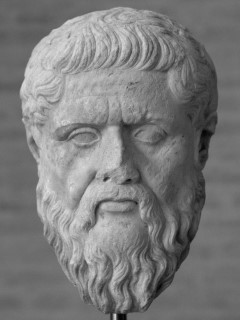Umberto Eco
1932-2016
Pizarro, J. (2018). A quotation from Seneca is missing: about a so-called poem for children. In A. Falcato, & A. Cardiello (Eds.). Philosophy in the condition of modernism (pp. 309-321). Dordrecht: Springer.
Kull, K. (2018). A study by Umberto Eco and his colleagues on the history of early zoosemiotics: commentary and bibliography. Sign systems studies, 46 (2-3), 383-391.
Pisanty, V. (2018). Duck or rabbit? Umberto Eco's structural pragmatics. European Journal of Pragmatism and American Philosophy, 10 (1), n/a. https://doi.org/10.4000/ejpap.1131.
Bellucci, F. (2018). Eco and Peirce on abduction. European Journal of Pragmatism and American Philosophy, 10 (1), n/a. https://doi.org/10.4000/ejpap.1122.
Marmo, C. (2018). Eco's "Latratus canis": a memory of the backstage. Sign systems studies, 46 (2-3), 378-382.
Auxier, R.E. (2018). Eco, Peirce, and the pragmatic theory of signs. European Journal of Pragmatism and American Philosophy, 10 (1), n/a. https://doi.org/10.4000/ejpap.1112.
Švanter, M. (2018). Pragmatic/pragmatist mind: Eco's cognitive semioticization of qualia. European Journal of Pragmatism and American Philosophy, 10 (1), n/a. https://doi.org/10.4000/ejpap.1140.
Innis, R. (2018). The lost trail of Dewey: Eco's problematic debt to pragmatism. European Journal of Pragmatism and American Philosophy, 10 (1), n/a. https://doi.org/10.4000/ejpap.1159.
Paolucci, C. (2018). Three pragmatist legacies in the thought of Umberto Eco. European Journal of Pragmatism and American Philosophy, 10 (1), n/a.
Kull, K. (2018). Umberto Eco on the biosemiotics of Giorgio Prodi. Sign systems studies, 46 (2-3), 352-364.
Privitello, L. (2018). Who's, what's, i don't know: a musement on Eco's pragmatism. European Journal of Pragmatism and American Philosophy, 10 (1), n/a. https://doi.org/10.4000/ejpap.1170.
Vattimo, G., Zabala, S. (2017). Response to Marder. In S. Mazzini, & O. Glyn-Williams (Eds.). Making communism hermeneutical (pp. 93-94). Dordrecht: Springer.
Pericles Trifonas, P. (2017). The role of the reader: remembering the possible worlds of Umberto Eco. In I. Semetsky (Ed.). Edusemiotics (pp. 179-191). Dordrecht: Springer.
Kull, K. (2017). Umberto Eco and John Deely: what they shared. Sign systems studies, 45 (1-2), 194-204.
von Hoff, D. (2016). Der hermeneutische Akt des Übersetzens: Schleiermacher und die Literaturverfilmung. In T. Seruya (Ed.). Rereading Schleiermacher (pp. 137-147). Dordrecht: Springer.
Žolkovskij, A. (2016). Otkrytaja sistema: Pamjati Umberto Eko. Novaja Gazeta Baltija, 2 (23).
Santaella, L. (2016). The originality and relevance of Peirce's concept of habit. In M. Anderson (Ed.). Consensus on Peirce's concept of habit (pp. 153-170). Dordrecht: Springer.
Kuehs, W. (2015). Mythenweber: soziales Handeln und Mythos. Dordrecht: Springer.
Nöth, W. (2014). Human communication from the semiotic perspective. In F. Ibekwe-San Juan, & T. M. Dousa (Eds.). Theories of information, communication and knowledge (pp. 97-119). Dordrecht: Springer.
Jerez, J. (2014). Notes on a new analogical realism. Rivista di estetica, 57, 251-256. https://doi.org/10.4000/estetica.777.
Philippopoulos-Mihalopoulos, A. , la Cour, A. (2013). Introduction: Luhmann encountered. In A. La Cour, & A. Philippopoulos-Mihalopoulos (Eds.). Luhmann observed (pp. 1-15). Basingstoke: Palgrave Macmillan.
Esposito, E. (2013). Limits of interpretation, closure of communication: Umberto Eco and Niklas Luhmann observing texts. In A. La Cour, & A. Philippopoulos-Mihalopoulos (Eds.). Luhmann observed (pp. 171-184). Basingstoke: Palgrave Macmillan.
Leiduan, A. (2011). Pour une sémiotique du mensonge: Fonction et enjeux du discours mensonger dans l'œuvre théorique et narrative d"Umberto Eco. Modèles linguistiques, 63, n/a. https://doi.org/10.4000/ml.180.
Chevalier, J.-C. (2010). Le pendule d'Eco. Modèles linguistiques, 3, 41-44. https://doi.org/10.4000/ml.418.
Klie, T. (2010). Riskante Liturgien: Zur Pragmatik religiösen Metapherngebrauchs in gesellschaftlicher Öffentlichkeit. In M. Junge (Ed.). Metaphern in Wissenskulturen (pp. 15-26). Wiesbaden: Verlag für Sozialwissenschaften.
Jones, D. (2002). Limiting the unlimited: Eco's realistic pragmatism. The American Journal of Semiotics, 18 (1-4), 127-142. https://doi.org/10.5840/ajs2002181/48.
Wirth, U. (2001). The struggle of interpretation: Eco's theory of interpretation between semiotics and hermeneutics. The American Journal of Semiotics, 17 (4), 125-139. https://doi.org/10.5840/ajs20011715.
Akrivoulis, D. E. (2000). Redesigning Newton's Cenotaph: quantum spacetime and the state — the culture of politics and the politics of culture. In C. Pierson, & S. Tormey (Eds.). Politics at the edge (pp. 254-271). Basingstoke: Palgrave Macmillan.
Nöth, W. (2000). Umberto Eco's semiotic threshold. Sign systems studies, 28, 49-60.
Guilhaumou, J. (1999). Umberto Eco, Kant et l'ornithorynque [Review of the book , by ]. Histoire Épistémologie Langage 21 (2), 170-172.
Bentele, G. (1992). Symbolische Politik im Fernsehen: ein Analysemodell. In E. Hess-Lüttich (Ed.). Medienkultur — Kulturkonflikt (pp. 215-232). Wiesbaden: Verlag für Sozialwissenschaften.
Tejera, V. (1991). Eco, Peirce, and interpretation. The American Journal of Semiotics, 8 (1-2), 149-168. https://doi.org/10.5840/ajs199181/231.
Ruthrof, H. (1991). The two paradigms: is a dialogue possible?. In R. Freadman, & L. Reinhardt (Eds.). On literary theory and philosophy (pp. 213-235). Dordrecht: Springer.
Tejera, V. (1989). Has Eco understood Peirce? The American Journal of Semiotics, 6 (2-3), 251-264. https://doi.org/10.5840/ajs198962/320.
Norris, C. (1986). Semiotics in Great Britain. In T. Sebeok, & J. Umiker-Sebeok (Eds.). The semiotic sphere (pp. 229-251). Dordrecht: Springer.
Threadgold, T. (1986). The semiotics of Vološinov, Halliday, and Eco. The American Journal of Semiotics, 4 (3-4), 107-142. https://doi.org/10.5840/ajs198643/423.
Gameros, M. (1983). Aesthetic semiosis of the visual object. In J. Deely, & M. D. Lenhart (Eds.). Semiotics 1981 (pp. 239-247). Dordrecht: Springer.
Langellier, K. M. (1983). The semiotic function of audience. In J. Deely, & M. D. Lenhart (Eds.). Semiotics 1981 (pp. 107-116). Dordrecht: Springer.




